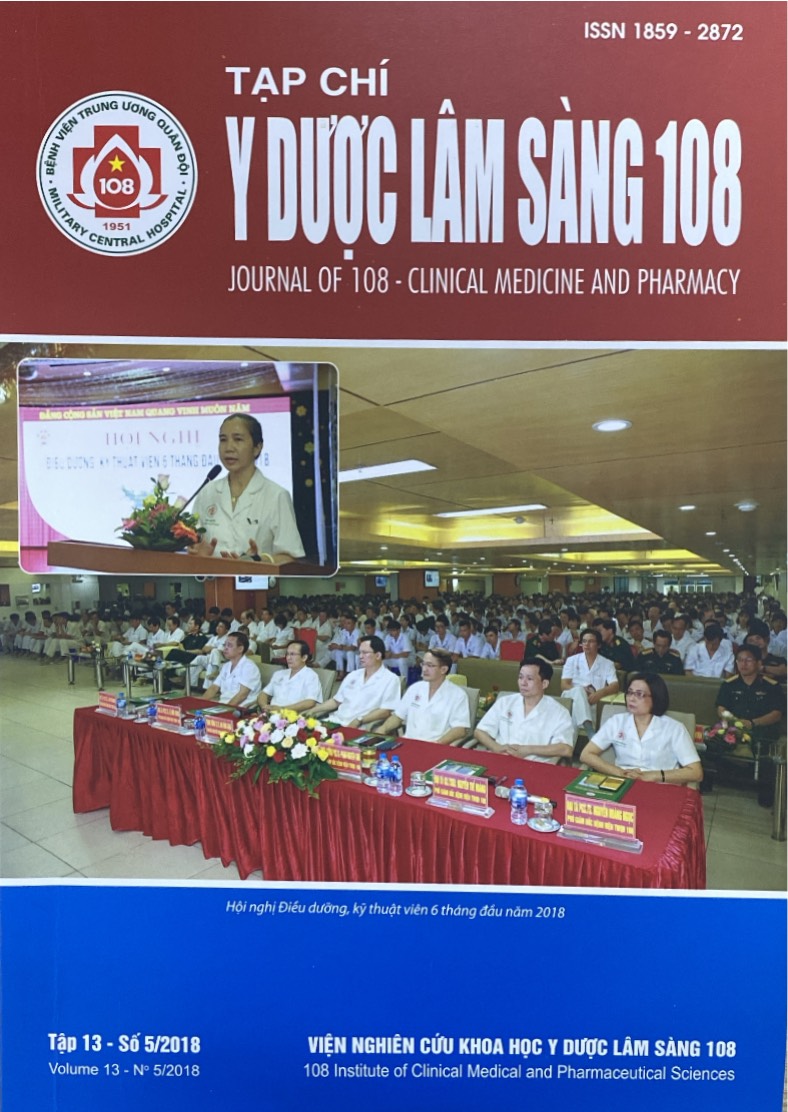Study of the value of ultrasonography, magnetic resonance 3.0T and edoscopic ultrasonography in the diagnosis of bilary obstruction
Main Article Content
Keywords
Abstract
Gallstone is a common disease, there are many methods for diagnosis of bile duct stones: Ultrasonography, magnetic resonance 3.0T and edoscopic ultrasonography, research to understand value of methods. Objective: Study of the value of ultrasonography, magnetic resonance 3.0T and edoscopic ultrasonography in the diagnosis of bilary obstruction. Subject and method: 62 patients with bile duct stones were treated at the Gastroenterology Department of the 108 Military Central Hospital from January 2017 to April 2018. Study of the value of ultrasonography, magnetic resonance 3.0T and edoscopic ultrasonography in the diagnosis of bilary obstruction comparrision with the gold standard ERCP. Result: Male 56.4%, female 43.6%, M/F = 1.3, the clinical mainly a Charcot, right lower rib pain 72.6%, fever 48.3%, jaundice 45.1%. EUS correct bile duct stone were 88.9%; Ultrasonography 72.2%, magnetic resonance 3.0T 83.3%. EUS and MRI 3.0 have moderate similarity in the diagnosis of bile duct stones with K = 0.690. Ultrasonography and EUS have a weak similarity in the diagnosis of bile duct stones with K = 0.350. In the diagnosis of bile duct stones the EUS had a sensitivity of 88.9%, specificity is 87.5%, correct diagnosis value is 88.7%; MRI 3.0 had a sensitivity of 83.3%, specificity is 87.5%, correct diagnosis value is 83.9%; Ultrasonography had a sensitivity of 72.2%, specificity is 62.5%, correct diagnosis value is 69.3%. Conclusion: Comparision with the gold standard ERCP, EUS is highest valuable next is MRI 3.0 and finaly is ultrasonography in the diagnosis of biliary obstruction.
Article Details
References
2. Hoàng Kỷ (1994) Chẩn đoán siêu âm trong các bệnh gan mật. Bách khoa thư bệnh học. Tập 11, Nhà Xuất bản Y học, Hà Nội, tr. 181-187.
3. Jean-D-Wilson (1991) Hepatobiliary imaging, Harrison's principles of Internal medicine volume two. International edition Mc. Graw-Hill-Inc, 1304-1307.
4. Cano LD (2007) Suspected choledocholithiasis: endoscopic ultrasound or magnetic resonance cholangio-pancreatography? A systematic review. European Journal of Gastroenterology & Hepatology 19(11): 1007-1011.
5. Brailski K et al (1998) Diagnosis of Jaundice, Vutr Boles. Bugaria medline 26(5): 24-32.
6. American Society for Gastrointestinal Endoscopy (2010) The role of endoscopy in the evaluation of suspected choledocholithiasis. Gastrointestinal Endoscopy 71(1): 1-9.
7. Schmidt S, Chevallier P, Novellas S et al (2007) Choledocholithiasis: repetitive thick-slab single-shot projection magnetic resonance cholangiopancreaticography versus endoscopic ultrasonography. Eur Radio 17(1): 241-250.
8. Almadi MA, Barkun JS, Barkun AN (2012) Management of suspected stones in the common bile duct. CMAJ. 184(8): 884-892.
9. Fusaroli P, Kypraios D, Caletti G et al (2012) Pancreatico-biliary endoscopic ultrasound: A systematic review of the levels of evidence, performance and outcomes. World J Gastroenterol, 18(32): 4243-4256.
 ISSN: 1859 - 2872
ISSN: 1859 - 2872
